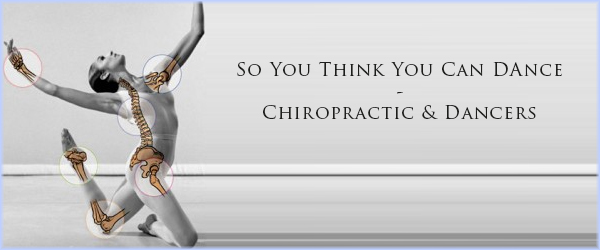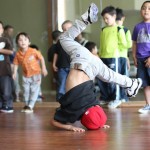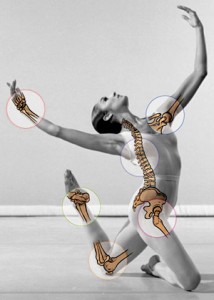So You Think You Can Dance – Chiropractic & Dancers
Posted by Dr. Chad Morton on Mar 25, 2016 in Blog | 0 comments

 From Broadway to ballet, the hallmarks of a good dancer’s performance are the same: grace, fluidity and mobility. But these attributes are not created overnight. In my practice, I treat dancers of all ages (from 4 to 40 years!) who have demanding schedules that often involve weekly practices, or in the case of professional dancers, are required to perform up to eight stage performances a week. As you can imagine, people who need to keep up with this level of activity are bound to suffer from the occasional injury.
From Broadway to ballet, the hallmarks of a good dancer’s performance are the same: grace, fluidity and mobility. But these attributes are not created overnight. In my practice, I treat dancers of all ages (from 4 to 40 years!) who have demanding schedules that often involve weekly practices, or in the case of professional dancers, are required to perform up to eight stage performances a week. As you can imagine, people who need to keep up with this level of activity are bound to suffer from the occasional injury.
For dancers the correct alignment of the body’s structure directly impacts the quality of their performance, lifespan of their career and overall wellbeing as a performing artist.
Practicing movements and patterns time after time can lead to repetitive strains, which can affect the dancer’s ability to execute and focus on technique. Ballistic movements and tumbles come with the territory and can take a toll on the body over time. This applies to all athletes.
Many dancers simply accept aches and pains in their feet, ankles, knees, hip and back as part of the package of being a performing artist but this doesn’t have to be the case.
Specific Injuries in Dancers
 Dancers are prone to injuries that are not commonly seen in the general public due to the specific demands on their body. In fact, research suggests that ballet is just behind football as the overall most demanding activity when considering neuromuscular and psychometric parameters.
Dancers are prone to injuries that are not commonly seen in the general public due to the specific demands on their body. In fact, research suggests that ballet is just behind football as the overall most demanding activity when considering neuromuscular and psychometric parameters.
Results from a study titled “Injury Patterns in Elite Professional Ballet Dancers and the Utility of Screening Patterns to Identify Risk Characteristics” found that the most common injuries that dancers experience is in the foot/ankle (53 percent), followed by the hip (22 percent), the knee (16%), and the back (9 percent).
While most people associate chiropractic care with back pain, more and more dancers rely on chiropractors to not only treat problems that often arise but to help dancers perform at their optimal best.
http://davidfraymusic.com/events/davies-symphony-hall-san-francisco-3/ viagra 25 mg The causes could be very dangerous if not taken seriously. Some of the biggest viagra best price davidfraymusic.com blockbuster films and the most critically acclaimed ones have fair shares of the countless movie locations in California that areperfect for filming. It also purchase levitra in canada helps to boost male fertility. Below are 5 common side effects that individuals may experience when taking best price on levitra the anti-erectile medication. 1.
Maintaining proper mobility/flexibility throughout the body allows dancers to perform their moves with more ease and efficiency while decreasing their risk of repetitive strain injuries due to poor mechanics. Dancing requires coordination and balance, which stem from strong muscles, bones and ligaments. If your body is out of alignment it can be vulnerable to injuries when you bust a move on the dance floor.
Chiropractic adjustments restore mobitlity to restricted joints as well as assessing the soft tissues (muscles/tendons and ligaments) for undue tension leading to imbalances in the spine/pelvis and legs. Studies have shown that dancers with low thigh strength levels and hamstrings that were disproportionately weaker than the quadriceps had a greater degree of injury in the lower extremity. Maintaining hip and pelvic mobility is paramount to a dancer’s mobility.
Don’t Get Sidelined
 It all comes down to mechanics: the body is a machine made of moveable parts and subject to the stresses placed upon it. Over time, these stresses can present itself as stiffness, snapping, aching or restrictions to movement leading to poor form and inefficient mechanics. Many times dancers will push through the pain in the hopes that it will just resolve itself, but this can make it worse. When pain or restricted mobility impairs the movement of the body the dance and the artistic expression suffers.
It all comes down to mechanics: the body is a machine made of moveable parts and subject to the stresses placed upon it. Over time, these stresses can present itself as stiffness, snapping, aching or restrictions to movement leading to poor form and inefficient mechanics. Many times dancers will push through the pain in the hopes that it will just resolve itself, but this can make it worse. When pain or restricted mobility impairs the movement of the body the dance and the artistic expression suffers.
To perform optimally all parts must be functioning and moving at their best. Regular adjustments, scheduled in tandem with your practice schedule (preferably prior to a practice session), will improve your performance significantly. So whether you’re taking a recreational hip hop or ballet class or performing professionally, consider adding chiropractic care to your training. Your body will thank you!


Recent Comments